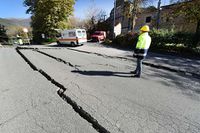Difference between revisions of "IS428 AY2019-20T1 Assign Ronald Lay Interactive Visualization"
Jump to navigation
Jump to search
| Line 28: | Line 28: | ||
=== Home Page=== | === Home Page=== | ||
| − | + | The homepage that provides the details of the problem happened in St. HiMark city. There are 5 topics which can be accessed on the cover page. | |
| − | [[File: | + | [[File:Ronald.Lay.2017_Cover_Page.PNG|500px|centre]] |
| − | |||
| − | |||
| − | |||
| − | |||
| − | |||
| − | |||
| − | |||
| − | |||
| − | |||
| − | |||
| − | |||
| − | |||
| − | |||
| − | |||
| − | |||
| − | |||
| − | + | For instance, if the users would like to discover more charts, they can refer to navigation bars at the top as indicated in the image | |
| − | + | [[File:Ronald.Lay.2017_Navigation.png|500px|centre]] | |
| − | |||
| − | |||
| − | |||
| − | |||
| − | |||
| − | |||
| − | |||
| − | |||
| − | |||
| − | |||
| − | |||
| − | |||
| − | |||
| − | |||
| − | |||
| − | |||
| − | |||
| − | |||
| − | |||
| − | |||
| − | |||
| − | |||
| − | |||
| − | |||
| − | |||
| − | |||
| − | |||
| − | |||
| − | |||
| − | |||
| − | |||
| − | |||
| − | |||
| − | |||
| − | |||
| − | |||
| − | |||
| − | |||
| − | |||
| − | [[File: | ||
| − | |||
| − | |||
| − | |||
| − | |||
| − | |||
| − | |||
| − | |||
| − | |||
| − | |||
| − | |||
| − | |||
| − | |||
| − | |||
| − | |||
| − | |||
| − | |||
| − | |||
| − | |||
| − | |||
| − | |||
| − | |||
| − | |||
| − | |||
| − | |||
| − | |||
| − | |||
| − | |||
| − | |||
| − | |||
| − | |||
| − | |||
| − | |||
| − | |||
| − | |||
| − | |||
| − | |||
| − | |||
| − | |||
| − | |||
Revision as of 23:55, 13 October 2019
The interactive visualization can be accessed here: https://public.tableau.com/profile/ronald4812#!/vizhome/VastChallenge2019-MiniChallenge1_15709732797180/PageOne
Home Page
The homepage that provides the details of the problem happened in St. HiMark city. There are 5 topics which can be accessed on the cover page.
For instance, if the users would like to discover more charts, they can refer to navigation bars at the top as indicated in the image


